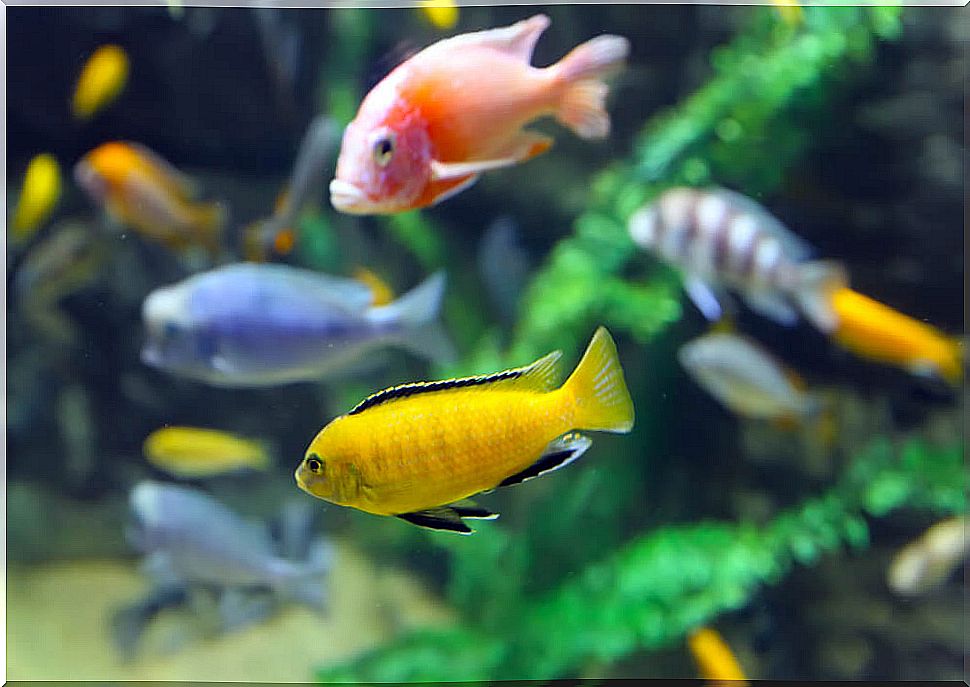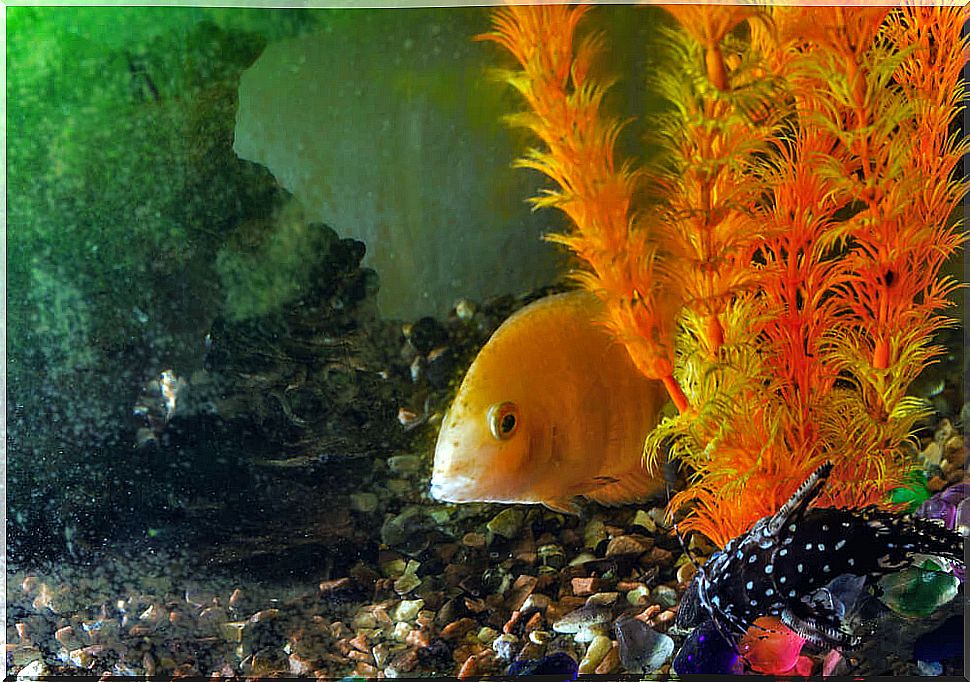How To Know If A Fish Is Healthy

Before introducing an aquarium into our home, we must be aware that its interior will be populated with living beings that require specific care.
The fish in an aquarium are sensitive animals that must have an optimal quality of life to develop correctly and avoid being affected by numerous diseases. Here are the main signs that a fish is healthy.
The most common diseases in fish and their symptoms
Before explaining how to know if your fish is healthy, we want to introduce you to the main diseases that can affect its health. By knowing the most common pathologies in aquarium fish, it will be easier to prevent them and recognize their symptoms.
The lernaea worm
The lernaea worm is a tiny parasite that buries its head in the body of the parasitized animal, generally a fish. Its presence generates an inflammatory process in the animal’s skin, which will show some green threads that can be difficult to identify with the naked eye.
When this parasite enters its skin, the fish usually swim insistently from one side to the other to rub its body against the glass of the aquarium. This is the way the animal finds to relieve the itching and discomfort caused by inflammation.

Dropsy
Hydrops is a chronic pathology that usually progresses silently in the organism of fish. It is generally associated with poor or inadequate aquarium hygiene, or lack of maintenance on its filters. However, nutritional deficits can also cause it.
When the aquarium does not receive proper hygiene, the water forms a breeding ground conducive to the proliferation of numerous bacteria, fungi and algae. Consequently, an excessive level of sodium and nitrites is observed.
In most cases, symptoms will only be visible in the later stages of the disease. In a fish affected by advanced dropsy, we will see a swollen abdomen and scales that protrude pointedly from its body.
White Point
The disease commonly known as ‘white point’ is very common in aquarium fish. It is a highly contagious disease caused by a microscopic parasite that lives under the skin of the animal.
These parasites need to leave the body of the fish to reproduce. Therefore, the progression of the disease leads to the formation of holes in the animal’s skin, which tend to become infected quickly. In these small holes, cysts form from which the new parasites will be born.
One of the most characteristic symptoms of this pathology is the appearance of white spots on the skin of the fish, which are precisely the holes generated by the parasites. Respiratory problems are also observed as the gills are prevented from moving normally.
Slime on the skin of fish
If a fish is healthy, its skin has its own distinctive glow that enhances its beauty. However, when a fish suffers from slime on its skin, we see that its body becomes increasingly opaque.
This is the main symptom of this disease and it happens thanks to the formation of a grayish layer on their skin and their gills. Another obvious sign of slime on the skin is that the fish will begin to rub its body against the glass or plants in the aquarium.
In general, slime on the skin is associated with poor fish tank hygiene or a problem with the filter system.

5 signs that your fish is healthy
When a fish is healthy, in addition to not presenting the symptoms mentioned above, we will also see signs that its life and behavior are balanced. These are obvious signs that your fish is healthy and enjoying its environment:
- Balanced and coordinated swim. If a fish is healthy, we observe that its swimming comprises balanced and coordinated movements. In addition, they are limited to moving in the swimming strip where individuals of their species usually move.
- Quick reactions. Healthy fish are sensitive and are always attentive to stimuli from their environment. Therefore, if they perceive any threat or strange stimulus, they flee quickly.
- Its skin and scales are healthy and lively. A healthy fish should not suffer loss of scales or alterations in its appearance, brightness or color. There are also no spots, points, inflammations or excessive formation of mucous on their skin or on their gills.
- Balanced appetite: if your fish is healthy, its appetite is normal and it will eat regularly at certain times. However, some diseases can cause poor appetite, while others lead to an increase in food consumption.
- His body has no appearance or shape alterations. The body of a healthy fish is well proportioned according to the characteristic features of its species. When a fish becomes ill, we can observe some alterations in the shape of the body, such as a swollen abdomen or the appearance of being too thin.
Many pathologies progress silently and compromise the health of the fish without showing obvious signs. Remember to pay special attention to the hygiene of the aquarium and the nutritional requirements of your fish.









